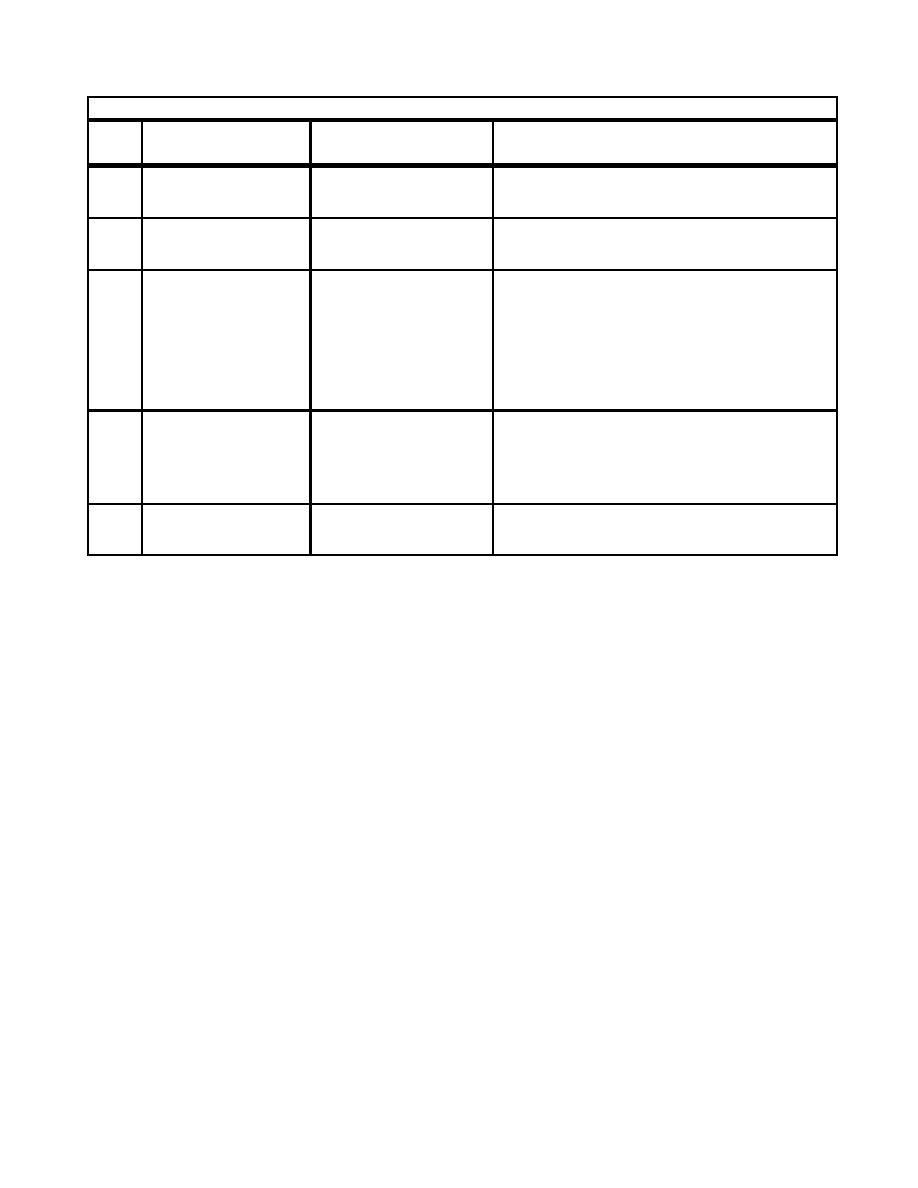
Chapter 4
Table 4.5. Overruns for Rotary-Wing Runways and Landing Lanes.
No.
Item Description
Requirement
Remarks
1
Total Length
23 m [75 ft]
(paved and unpaved)
7.5 m (25 ft)
Air Force and Army only.
2
Paved Length of
Overrun
3
Width
38 m [125 ft]
Width of runway plus paved shoulders.
A minimum width of 45 meters [150 feet] for
airfields which regularly accommodate H-53
aircraft (30 meter [100 feet] runway and 7.5
meter [25 feet] shoulders).
4
Longitudinal
Max. 1.0%
Changes in longitudinal grade in overrun or
Centerline Grade
between overrun and runway should not
exceed 0.167% per 30 linear meters [100
linear feet].
5
Transverse Grade
Min. 2.0%
Warp to meet runway and shoulder grades.
(paved and unpaved)
Max. 3.0%
NOTES:
1. Metric units apply to new airfield construction and where practical modification to existing airfields and heliports,
as discussed in paragraph 1.4.4.
2. The criteria in this manual are based on aircraft specific requirements and are not direct conversions from inch-
pound (English) dimensions. Inch-pound units are included only as a reference to the previous standard.
3. Airfield and heliport imaginary surfaces and safe wingtip clearance dimensions are shown as a direct conversion
from inch-pound to SI units.
4.11.1. Clear Zone Land Use. The Clear Zone for Rotary-Wing facilities must be free of obstructions,
both natural and manmade, and rough-graded to minimize damage to an aircraft that runs off or lands
short of the end of the landing surface. In addition, the Clear Zone permits recovery of aircraft that are
aborted during take-off. The Clear Zone should be either owned or protected under a long term lease.
Land use for the Clear Zone area for rotary-wing facilities corresponds to the Clear Zone land use
criteria for fixed-wing airfields as defined for DoD AICUZ standards, and as discussed in Chapter 3
and Attachment 4.
4.11.2. Accident Potential Zone (APZ). Land use for the APZ area at rotary-wing facilities
corresponds to the APZ land use criteria for fixed-wing airfields as defined in DoD AICUZ standards,
and as discussed in Chapter 3 and Attachment 4. Ownership of the APZ is desirable but not required.
If ownership is not possible, land use should be controlled through long-term lease agreements or local
zoning ordinances.
4.11.3. Dimensions. Table 4.6 shows the dimensional requirements for the Clear Zone and APZ.
These dimensions apply to rotary-wing runways, helipads, landing lanes and hoverpoints, depending
on whether they support VFR or IFR operations. Layout of the Clear Zone and APZ are shown in
Figures 4.1, 4.2 and 4.4 through 4.9.
4-23



 Previous Page
Previous Page
